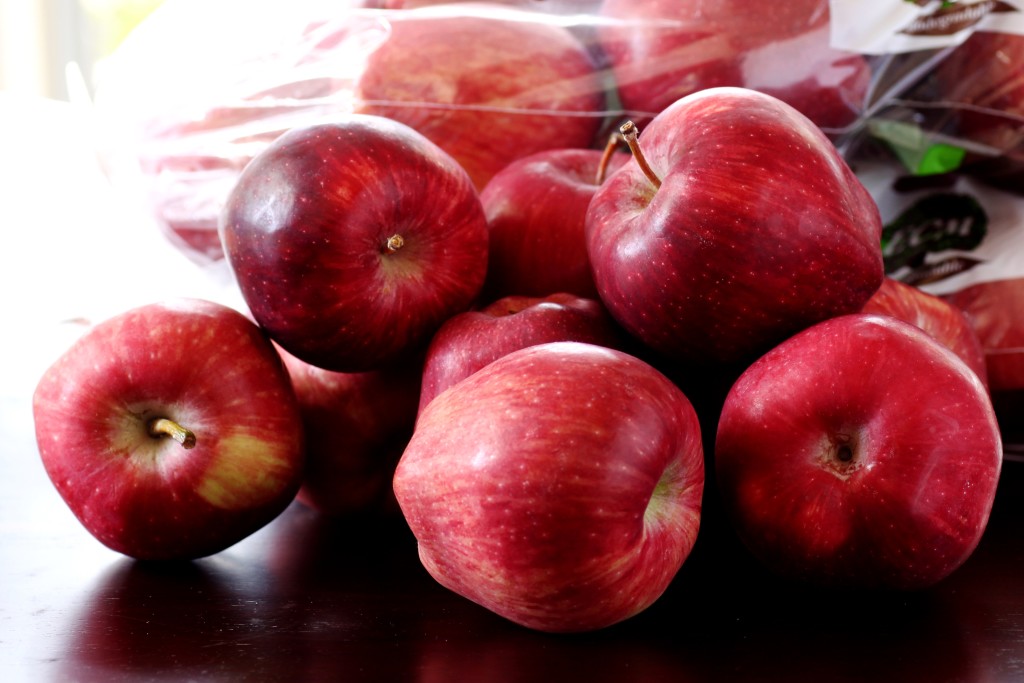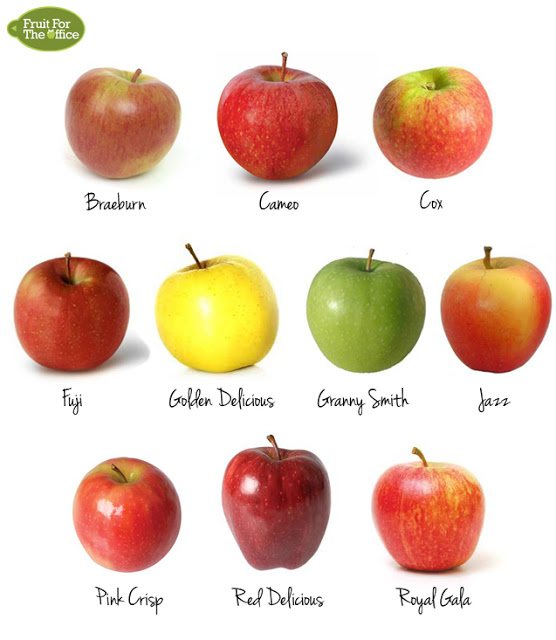We see them growing on trees. We have them in our cafeterias. We buy them cheaply at our grocery stores. We give them to our teachers. We can use them in sweet AND savory dishes. We eat them to keep the doctor away.
What is this magical produce?
APPLES!
Nutrients
Apples are economically good for the pocket book and for your health. They are fat, sodium, and cholesterol free; these are three main components that cause obesity in children and adults. Containing high amounts of Fiber, Vitamin C, and Phytonutrients, apples support many normal body functions. Some of these benefits include aiding in: digestion, maintain growth development, and maintaining blood sugar. Apples are antioxidants, which means they aid in blocking damages caused by free radicals that harm the body. The apple is 80% water, helping to cool and hydrate the body as well. One medium apple is around 80 calories.
History & Quick Facts
Apples have been a part of human history for quite some time. Most historians believe the apples originated in the Dzungarian Alps in Asia, while others believe they originated in the Caucasus Mountains. Regardless, the apple was a fruit wanted and traded across Asia and eastern Europe. Ancient Greeks and Romans saw the apple as a symbol of love and beauty. When colonists settled America in the 17th Century, they brought apple seeds with them. Pilgrims planted the first modern day apples in the Massachusetts Bay colony. Interestingly, the crabapple was the only native apple to America. The new varieties of apples flourished in the American climate. John Chapman, “Johnny Appleseed,” increased the spreading of the famous fruit by planting apple seeds along the northern states including but not limited to: Ohio, Illinois, and Indiana. Today, the world’s top producers of apples are China, the United States, Turkey, Poland and Italy.
Variety & Colors
Apples range in size from a little larger than cherry to the size of a large grapefruit. Around 2,500 varieties are grown in the United States and over 7,500 are grown around the world. Apples come in all shades of green, yellow, and red.
Harvesting & Storing
Every state in the United States produces apples, but commercially in only 36 making it the third most important fruit for the United States economy. Most apples are still hand picked. The prime time for apples are in the fall. Apples are generally harvested when the ground color of the apple turns from leaf green to creamy yellowish/green, anything otherwise, and the apples will be sour. When harvesting green apples, producers generally check for a “pink flush.” Apples store in moderate environments well for up to six months, ensuring easy storing for consumers. Later producing apple varieties will most likely store for longer than earlier ones.
Apples have come such a long way to support not only apple producers, but the general public’s well being. So the next time you dig into this juicy and flavorful fruit, think about how you are helping your body and your local farmer!
Happy apple month everyone!
Sources:
http://www.vermontapples.org/history-column.php
http://www.urbanfarmonline.com/urban-gardening/backyard-gardening/history-of-apples.aspx
http://urbanext.illinois.edu/apples/facts.cfm
http://www.bbc.co.uk/gardening/basics/techniques/growfruitandveg_harvestapples1.shtml
http://lancaster.unl.edu/hort/nebline/applestorage.shtml
http://www.history.com/news/hungry-history/all-about-apples



Recent Comments